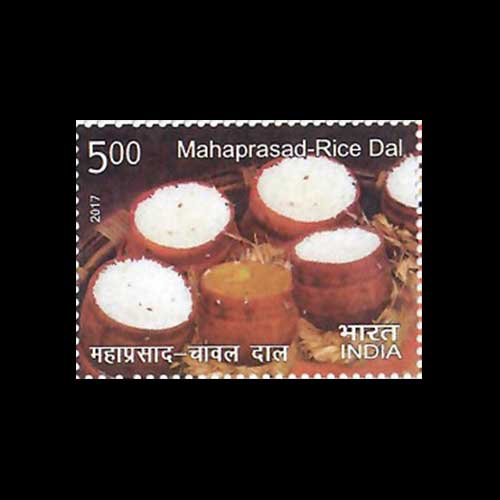Fascinating Archaeological Facts on Postage Stamps - 75
2025-07-17 Thu
Dals are split pulses that are integral to the cuisines of the Indian subcontinent. Interestingly, the Sanskrit origin "dala" (to split) evolved into "dal" in Hindi and other Regional languages. It specifically denotes the processed form of legumes, distinguishing them from whole #beans or other forms. Each state in India has its own preferred varieties; however, the most commonly used dals—such as masoor, tur, urad, moong, and chana dal—are enjoyed nationwide.In his seminal work, "Indian Pulses through the Millennia" (2005), Y.L. Nene notes that tur dal (pigeon pea), urad dal (black gram), and moong (green gram) originated in the Indian subcontinent. Research by Sarkar et al., presented in "Pigeon Pea (Cajanus cajan): An Important Food Legume in the Indian Scenario" (2018), highlights archaeological evidence of tur dal found at Neolithic sites in Sanganakallu, Karnataka, as well as in Tuljapur Garhi (Maharashtra) and Gopalpur (Odisha). Furthermore, Fuller and Harvey's study, "The Archaeobotany of Indian Pulses: Identification, Processing and Evidence for Cultivation" (2006), indicates that urad dal was domesticated approximately 4,500 years ago, with archaeological evidence emerging from the regions of Gujarat and the Northern Peninsula of India. K.R.M. Swamy's recent research paper (2023) discusses the discovery of carbonized mung beans at various archaeological sites throughout India. These findings date back around 4,500 years in the western and northwestern regions, and over 4,000 years in Karnataka. Some scholars propose that separate instances of domestication occurred in the northwest and south of India. In ‘Ancient grains from India (1974)’ MD Kajale claims that the earliest archaeological record for lentils in India comes from Chirand (Bihar) dating back to 1800 BCE - 1300 BCE.
Additionally, K.T. Achaya's "Indian Food: A historical Companion" (1994) references various pulses, including maash (urad), mansura (masoor), and mudga (moong) in the Yajurveda. Notably, King Someshvara III mentions Dishes featuring pulses in his 12th-century work, "Manasollasa," highlighting the combination of pulses with cereals, vegetables, and meats in traditional preparations.
As a tribute to the culinary Heritage of India, on 03 November 2017, India Post released a set of 24 stamps, along with five miniature sheets, dedicated to Indian cuisine. One of these stamps showcases RICE and dal as part of the Mahaprasad offered to Lord jagannath at the Jagannath Temple in puri, Odisha.
Latest News
-
Ghiyath Shah as Heir Apparent
2025-09-25 ThuGhiyath Shah was the ruler of the Malwa Sultanate, reigning from 1456 to 1500. From 1456 to 1469, he...
-
Malwa Sultan Mahmud Shah Silver Coins
2025-09-11 ThuMalwa Sultan Mahmud Shah minted silver coins in round and square flans. <br><br> For round coins,...
-
Malwa Sultan Mahmud Shah Billon coin
2025-08-26 TueMalwa Sultan Mahmud Shah's billon coins followed three weight standards: 100 rati, 96 rati, and 80 r...
-
Fascinating Archaeological Facts on Postage Stamps - 91
2025-08-23 SatRhinoceros is one of the oldest land mammal species existing in India. There are five species of rhi...
-
Fascinating Archaeological Facts on Postage Stamps - 90
2025-08-23 SatUthiramerur, a Village in Kanchipuram, Tamil Nadu, is notable for its Temple inscriptions that descr...

